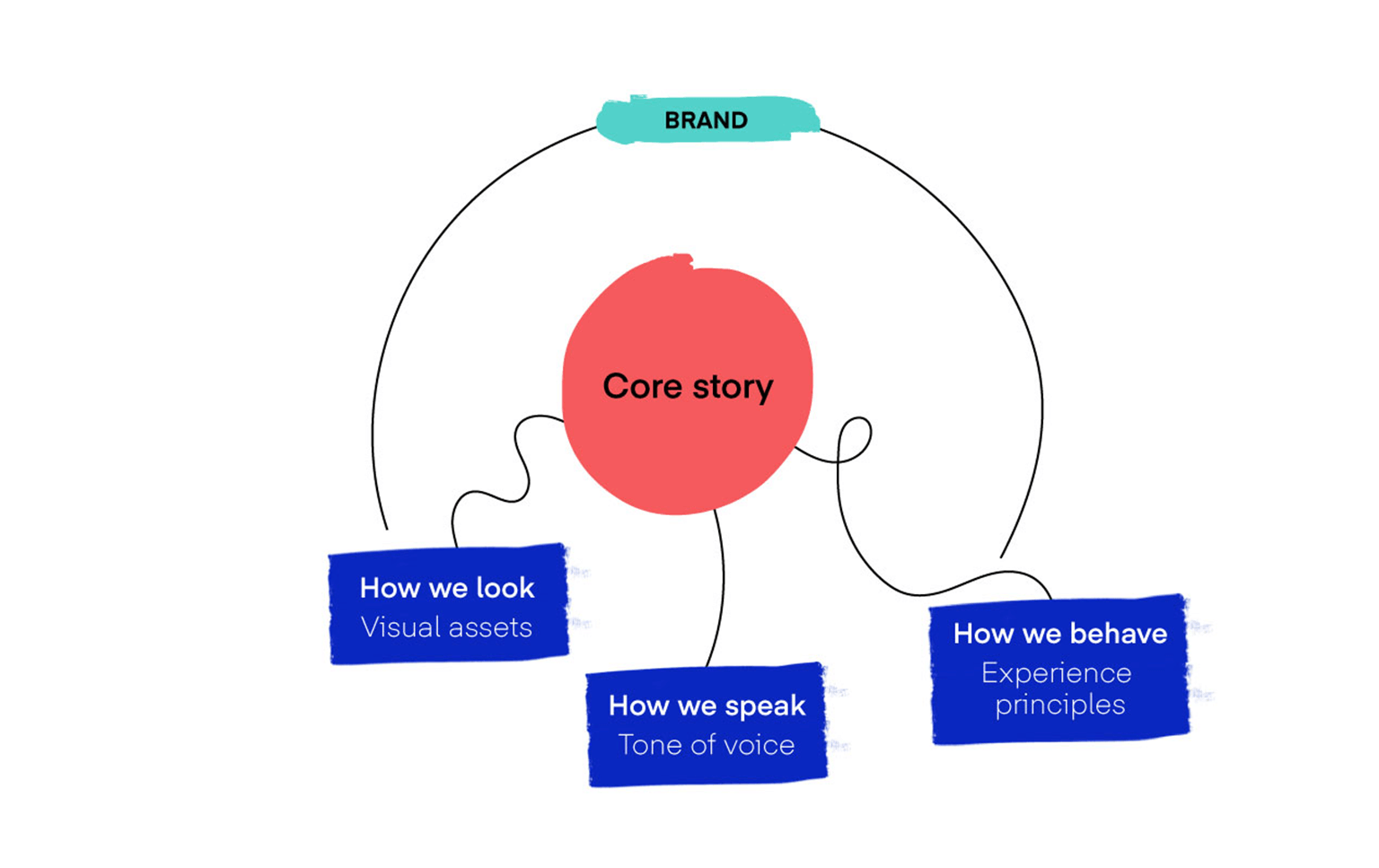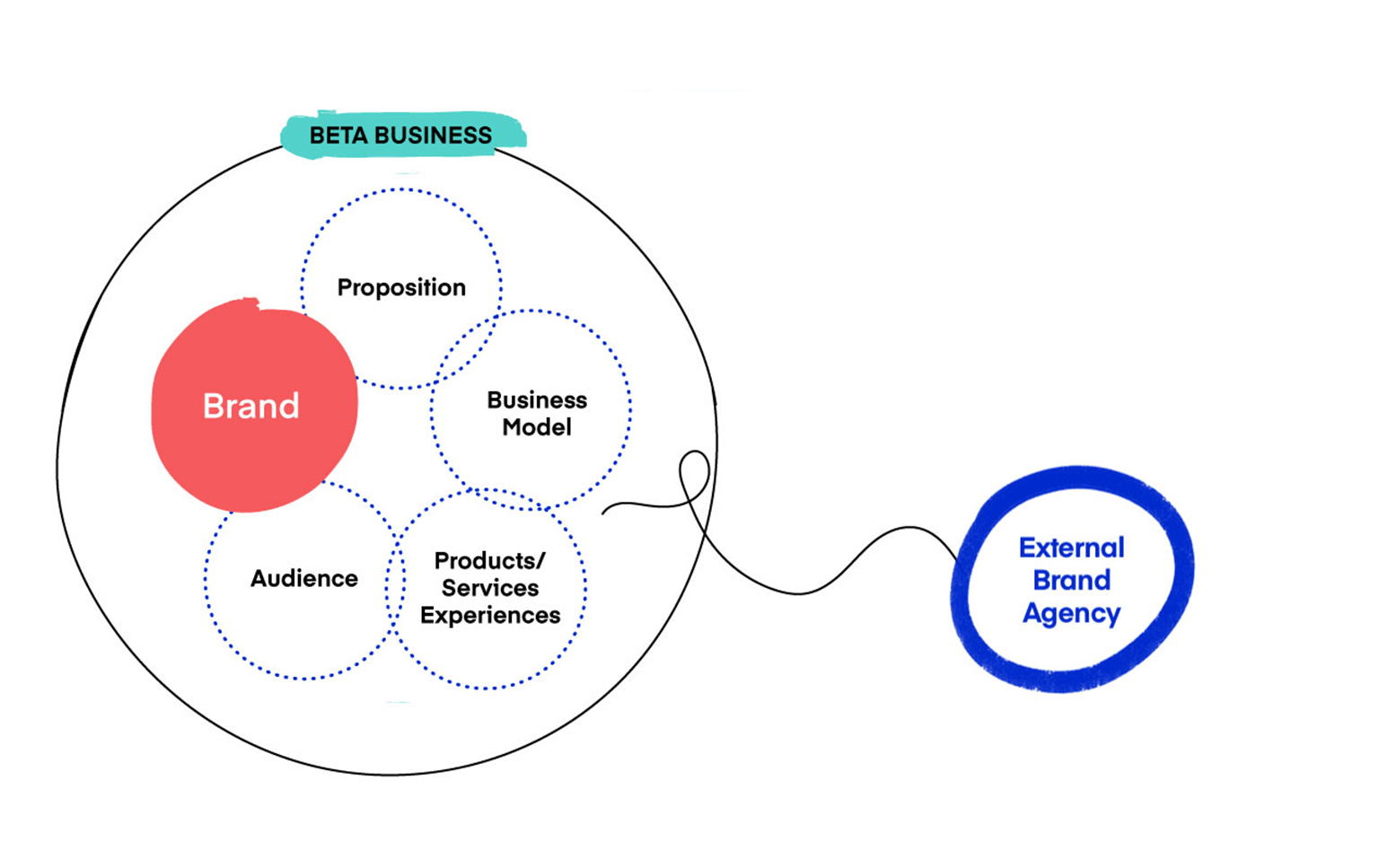
Bring your brand to life in beta
How many times have you developed a product or service, only to realise too late in the process that it needs a brand? Or your brand agency works in total silo from the team who actually understands the product, its audience and proposition? We’ve found a way to change all that.
I began my career as a visual designer. I’ve also worked as a freelancer and I’ve been exposed to many different methodologies to bring brands to life. And now, as a lead product designer at Idean, I’m working on a new way of bringing brands to life through an approach we call Beta Business.
 Play video
Play videoWe hosted a Beta Business Makers Meetup event where I spoke about beta brands. If you want the 16 minute version of my article, give this a watch!
A Beta Business is a spin-off designed to launch and learn faster than the competition. And we think there’s a huge potential to bring brands to life from within the core of a Beta Business.
Infinite choices for the conscious consumer
Why should you consider brand in the first place? Competition creates infinite choices. More than 216,000 businesses were registered in the London area last year but 50% of startups don’t survive after 5 years in the market. What is going to help those business to stand out in the market? Brand is a powerful weapon to protect you from the competition and create customer loyalty.
It’s impossible to ignore the negative impact that our consumption has on the planet. It’s why 70% of millennials are willing to spend more with brands that support causes they care about (Cone Communications, 2017). This has provoked a massive shift in what it means to be a brand. Brand is what people see of you, and how that makes them feel.
A couple of years ago I read an article about the New Balance founder giving nearly $400,000 to Trump’s campaign. After reading that article, I couldn’t wear my New Balance shoes. I didn’t want to be mistaken for a Trump supporter. Maybe it was fake news – but made me change my behaviour towards that brand.
Let’s not forget that brands can create a positive impact. A brand that establishes a great connection with their audience, and maintains that consistently over time, develops credibility against its competitors.
Brand is a part of every business, whether you care about it or not
Brand is a part of every business, whether you care about it or not. It’s how your product or service connects with people. So it’s time to include it in the business.
What is a brand anyway?
People might use the word ‘brand’ to talk about logos, colours and shapes. But a logo or visual identity is not a brand – it’s just an expression of one.
When you think about famous brands like John Lewis or Monzo, you probably think about their logos, or Monzo’s bright coral card. But you’ll also have made some associations with these companies. John Lewis is reliable, authentic and supportive. Monzo is disruptive and innovative. So how do you create this emotional relationship with your customers?
Brand is a way to connect emotionally with your customers, become irreplaceable and create lifelong relationships
First, you need to establish your purpose and vision. What is the core story? Why are you building this product or service? What are you building? How does it work? Who is your audience?
If you’re shaping your Beta Business, you might already know the answers to these questions. The next step is to translate your core story to the personality (values) of the brand. Are you playful, fresh and functional? Or serious, authentic and human? Your core brand story should guide every way in which you communicate and interact with your customers. The way your brand looks (visual assets), talks (tone of voice) and behaves (customer experience).
Just like with our Beta Business, you will learn and shape your brand – but the core story stays the same. It’s just like people: they dress, speak and act differently depending on the context they’re in, but their personality stays the same.

Brand creates tension
Brands play different roles in different businesses. Sometimes, using the power of the parent brand can help with engagement. But new ventures are risky, so using the parent brand might not be appropriate and can negatively impact the parent brand image. Maybe your parent brand doesn’t allow your new business to grow and explore new spaces or different revenue streams. Or it doesn’t resonate well with your new target audience.
A new brand identity can be the solution for these scenarios – but every business has different needs. You need to start that conversation early in the process, involving the right people to evaluate the risks and benefits, and creating the right expectations for the journey they want to take.
Brands in beta are an opportunity
Our Beta Business model allows you to build your brand alongside your core business. It’s just as important to develop your brand as it is to shape your product or service.
But what are the benefits? Firstly, you don’t need to wait to launch a product before you start validating it with your customers. You can implement your customer insights and adapt your plan incrementally.
Working close to experts across your core team from the beginning can give you different perspectives and insights on where your brand should be. You’ll achieve the brand market fit by de-risking earlier, with less effort, and win some customers for life.

Key learnings
- Step 1 – Create the right conditions to talk about brand. Do you need a new brand for your new business? Or should you stay close to your parent brand? Talk about the risks and benefits, and decide each journey for your brand as a team.
- Step 2 – Define the right foundations for your brand. Start with a workshop to define the brand framework experience. What’s the core story of your brand? What’s the personality of your brand?
- Step 3 – Build just enough to start learning. With this foundation, it’s easy to create all your assets and prototype.
Are you struggling to bring brand into your business? Maybe you’re already thinking differently about brand methologies and want to share your ideas?
I’d love to hear from you. Let’s start a conversation.

Inês is a Product Designer adept of Human-Centric Design with more than 10 years of experience. She strives to solve business problems and transform products and services into a purposeful experience that truly helps and empowers customers and businesses. Throughout her career, she has been collaborating with well-recognized brands such
as Airbnb, Adidas, BBC, eBay, HSBC.
We respect your privacy
We use Cookies to improve your experience on our website. They help us to improve site performance, present you relevant advertising and enable you to share content in social media. You may accept all Cookies, or choose to manage them individually. You can change your settings at any time by clicking Cookie Settings available in the footer of every page. For more information related to the Cookies, please visit our Cookie Policy.